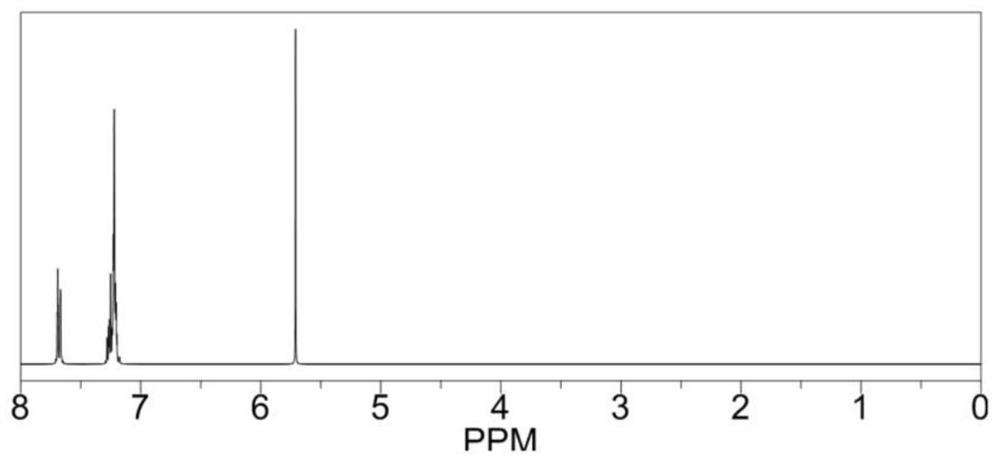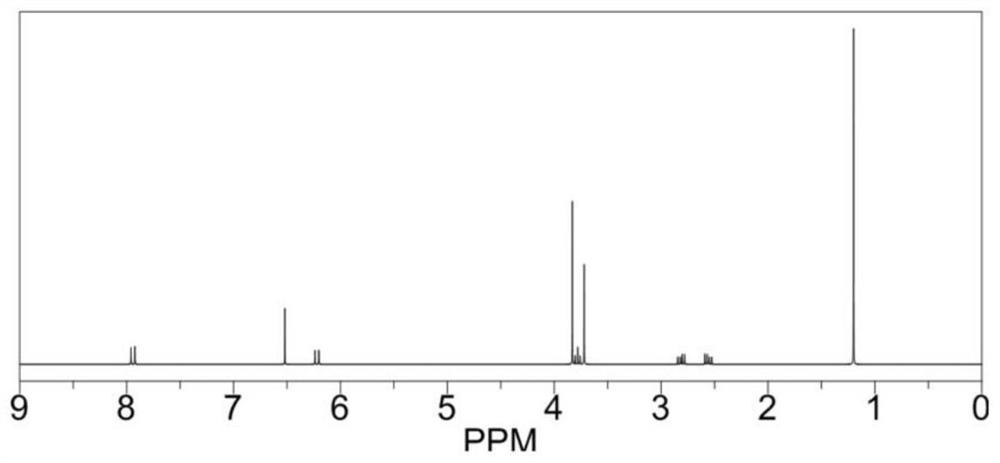Boron trifluoride salt electrolyte and preparation and application thereof
A technology of boron trifluoride and electrolytes, which is applied in the direction of chemical instruments and methods, circuits, electrical components, etc., can solve problems such as correlation or deducibility uncertainty, and achieve improved electrochemical performance, high ionic conductivity, and improved The effect of cycle performance
- Summary
- Abstract
- Description
- Claims
- Application Information
AI Technical Summary
Problems solved by technology
Method used
Image
Examples
Embodiment 1
[0067] Embodiment 1: raw material
[0068] Preparation method: under a nitrogen atmosphere, mix 0.01 mol of raw materials and boron trifluoride tetrahydrofuran complex (2.8 g, 0.02 mol) in 15 ml of ethylene glycol dimethyl ether, and react at room temperature for 12 hours. The obtained mixed solution was dried under reduced pressure at 40° C. and a vacuum degree of about -0.1 MPa to remove the solvent to obtain an intermediate. Dissolve lithium ethoxide (1.04g, 0.02mol) in 10ml of ethanol and slowly add it to the intermediate, stir and react at 45°C for 10 hours, and dry the resulting mixture under reduced pressure at 40°C and vacuum degree of about -0.1MPa , The obtained solid was washed three times with n-butyl ether, filtered and dried to obtain the product M1. Yield was 78%, NMR as figure 1 shown.
Embodiment 2
[0069] Embodiment 2: raw material
[0070] Preparation method: under argon atmosphere, mix 0.01mol of the raw material and boron trifluoride etherate complex (2.98g, 0.021mol) in 15ml of THF, and react at room temperature for 12 hours. The resulting mixed solution was dried under reduced pressure at 30° C. and a vacuum of about −0.1 MPa to remove the solvent to obtain an intermediate. Add 14ml of butyllithium hexane solution (c=1.6mol / L) to the intermediate, stir and react at room temperature for 6 hours, and dry the resulting mixture under reduced pressure at 40°C and a vacuum of about -0.1MPa. The obtained crude product was washed 3 times with cyclohexane, filtered and dried to obtain the product M2. The yield was 86%, NMR such as figure 2 shown.
Embodiment 3
[0071] Embodiment 3: raw material
[0072] Preparation method: Under a nitrogen atmosphere, take the raw materials 3,5-dibenzyloxyphenylglyoxal hydrate (3.64g, 0.01mol) and lithium methoxide (0.76g, 0.02mol), mix them with 20ml of methanol, and react at room temperature 8 hours. The obtained mixed solution was dried under reduced pressure at 40° C. and a vacuum degree of about -0.1 MPa to remove the solvent to obtain an intermediate. Add boron trifluoride tetrahydrofuran complex (3.07g, 0.022mol) and 15mlTHF to the intermediate, stir at room temperature for 9 hours, and dry the resulting mixture under reduced pressure at 30°C and a vacuum of about -0.1MPa , the resulting solid was washed three times with isopropyl ether, filtered and dried to give the product M3. Yield 77%, NMR as image 3 shown.
PUM
| Property | Measurement | Unit |
|---|---|---|
| diameter | aaaaa | aaaaa |
| diameter | aaaaa | aaaaa |
| diameter | aaaaa | aaaaa |
Abstract
Description
Claims
Application Information
 Login to View More
Login to View More - R&D
- Intellectual Property
- Life Sciences
- Materials
- Tech Scout
- Unparalleled Data Quality
- Higher Quality Content
- 60% Fewer Hallucinations
Browse by: Latest US Patents, China's latest patents, Technical Efficacy Thesaurus, Application Domain, Technology Topic, Popular Technical Reports.
© 2025 PatSnap. All rights reserved.Legal|Privacy policy|Modern Slavery Act Transparency Statement|Sitemap|About US| Contact US: help@patsnap.com



